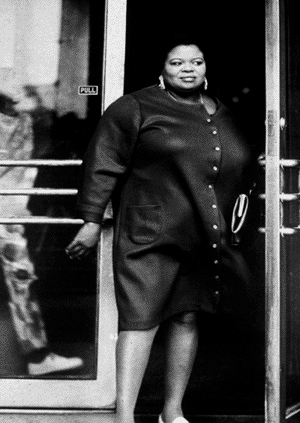
Barbara Crane: Human Forms. 1965/66 revised 7/15/2002
These images are taken from
a body of work done for a Master's Degree in Photography at the Institute
of Design at Illinois Institute of Technology in Chicago. The famous Bauhaus
School from Weimar, Germany became what is now the Institute of Design
in Chicago when it was moved to the United States in 1937. The photographic
section of my graduate thesis consisted of ninety pictures, which is rather
large for such a project. Because I had never explored the concepts included
in the School's undergraduate curriculum, I immersed myself in exploring
the assignments in depth at a graduate level in order to better understand
the philosophy of the School.
For years I had only used a twin-lens reflex camera but I wanted to learn
how to use a 4x5 view camera for the project. This also expanded my technical
knowledge for my teaching position in photography. The view camera brought
new insights to my work because of the precision and versatility inherent
in the use of large format equipment.
My interests were in issues of form, light, line, volume, and visual discovery
with a heavy emphasis on experimentation. Each situation required adjustments
due to the model, lighting, my past photographic experiences, and my technical
development at that specific time. I began with my children as models
with an agreement between us that their faces would not be recognizable.
Which allowed me to become more abstract in my vision.
At first, I continued using my old twin lens reflex camera in order to
have more concentration by using just one camera with the addition of
a supplementary close-up lens. Abstraction of my subject matter became
more accessible by virtue of a close-up position. When I changed to a
4x5 camera I learned to make use of my many technical mistakes thereby
opening exciting new ideas. I was not seeking the type of realism that
many people recognize as essential in photographing the nude body. My
cause was form, elements of composition, and a transcending of obvious
realism. In using light to control and delineate the body rather than
illuminate the form, I found new freedom of concept. Due to a fellow student's
insistence that cropping a negative was not pure photography, I developed
the discipline of composing the final image on the ground glass or in
a view finder so that no changes needed to be made to the images while
I was enlarging them in the darkroom.
In the black background pictures I was seeking to obtain a fine line of
the body form in various simple positions as if painting with a small
brush coated with light against a deep black background. Because of tonal
gradations and shadows some of these pictures give an illusion of floating
in dark space. Others, with fewer modulations and stronger chiaroscuro,
are almost two-dimensional.
I titled the white background series as the Fine Line of Form. It was
if my brush were a fine one coated with black pigment. The theory was
that the fine black line of the shadow would rhythmically delineate the
body in the white space as if it were a drawing. In these images delicacy
of line was important and was to be found in the creases of the body or
under it. From this group of pictures a new purpose evolved in the synthesis
of reality and abstraction and they were a turning point in my vision
and in my entire future body of work. With this awakening, along with
a continuous search and steady growth in image making, came a desire to
explore new ways of expression. My technical improvement and growing visualization
abilities nurtured new ideas and the human body became a limitless subject
matter. My driving force was a sense of discovery both within myself and
on the ground glass. Each picture widened my image concepts and ideas
while the accidental or technically imperfect pictures became cherished
ones by opening new doors.
In the use of multiple exposure
I was able to transform the human body from how I had been used to seeing
it. The multiple exposures play with reality, sometimes leaving it raw,
complicating it, enhancing it, making it absurd, grotesque, or lyrical.
With the camera=s powers of both truth and deception, and with a view
camera’s accessibility I was able to place manipulations inside the
camera. Multiple exposures produced new symbols thereby opening more new
paths to follow. The human form with its infinite varieties, shapes, tones,
creases, elasticity, complexity and simplicity served only as the occasion
or reason for making a photograph. I found that the body could suggest
images unrelated to the flesh.
I had discovered that defining the figure by means of light and/or a light
void as if one quick gesturing stroke of a fine or broad brush coated
with dark or light became enough to communicate a message. Employing either
a black or a white background determined whether the shadow or the highlight
would dominate the form. I had come to understand that light and its counterpart,
darkness, were the prime keys to my success in pictures of all kinds.
Barbara Crane
6/1966, revised 7/15/02
Murals for Baxter / Travenol Labs

